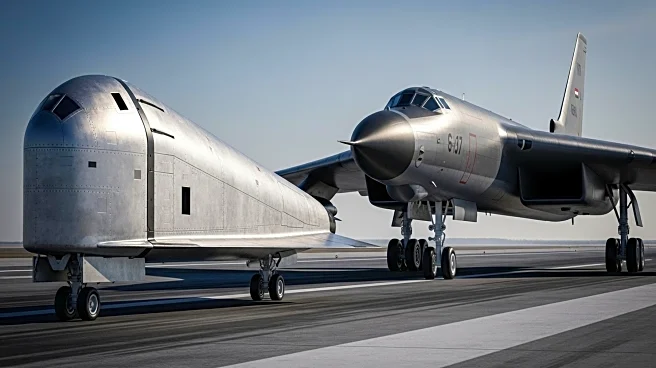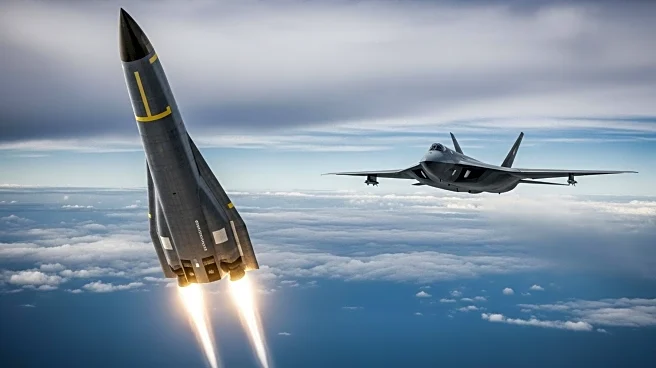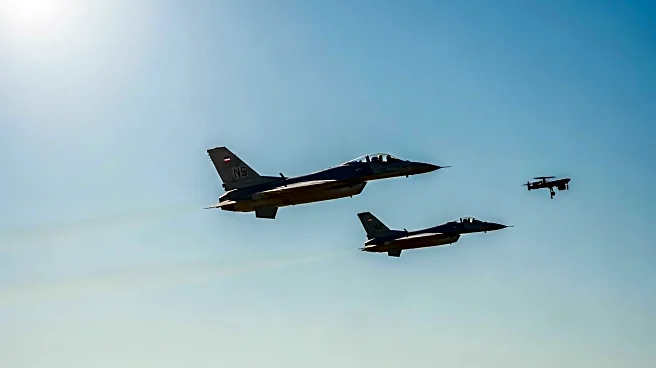What is the story about?
What's Happening?
Russia has conducted military exercises involving the firing of a Zircon hypersonic cruise missile in the Barents Sea and strikes by Sukoi Su-34 supersonic fighter-bombers. These drills are part of the 'Zapad' joint strategic exercise with Belarus, which began on September 12. The exercises aim to enhance military command and coordination in the event of an attack on Russia or Belarus. Despite assurances from Moscow and Minsk that the drills are defensive, NATO has initiated an 'Eastern Sentry' operation following Russian drone incursions into Poland earlier in September. The Russian defense ministry released footage showing the successful launch and impact of the Zircon missile, which is capable of flying at nine times the speed of sound and hitting targets over 600 miles away.
Why It's Important?
The military exercises underscore Russia's ongoing efforts to bolster its defense capabilities amid heightened tensions with NATO. The use of advanced weaponry like the Zircon hypersonic missile highlights Russia's focus on maintaining a strategic edge. These developments could further strain relations between Russia and NATO, particularly in light of recent drone incursions into Poland. The drills also reflect Russia's commitment to strengthening its military alliance with Belarus, which could have implications for regional security dynamics. The demonstration of such military capabilities may prompt NATO to reassess its defense strategies in Eastern Europe.
What's Next?
NATO's response to the Russian drills, including the 'Eastern Sentry' operation, suggests increased vigilance and potential adjustments in military postures in Eastern Europe. The ongoing exercises may lead to further diplomatic engagements or tensions between Russia and NATO member states. Observers will be watching for any additional military maneuvers or announcements from Russia and Belarus, as well as NATO's strategic responses. The situation may also influence future military collaborations and defense policies within the region.
Beyond the Headlines
The use of hypersonic missiles in military drills raises questions about the evolving nature of warfare and the implications for global security. Hypersonic technology represents a significant advancement in military capabilities, potentially altering the balance of power. The drills also highlight the strategic importance of the Arctic region, where the Barents Sea is located, as a site for military operations and geopolitical interest. The exercises may prompt discussions on arms control and the need for international agreements to manage the proliferation of advanced weaponry.
AI Generated Content
Do you find this article useful?














